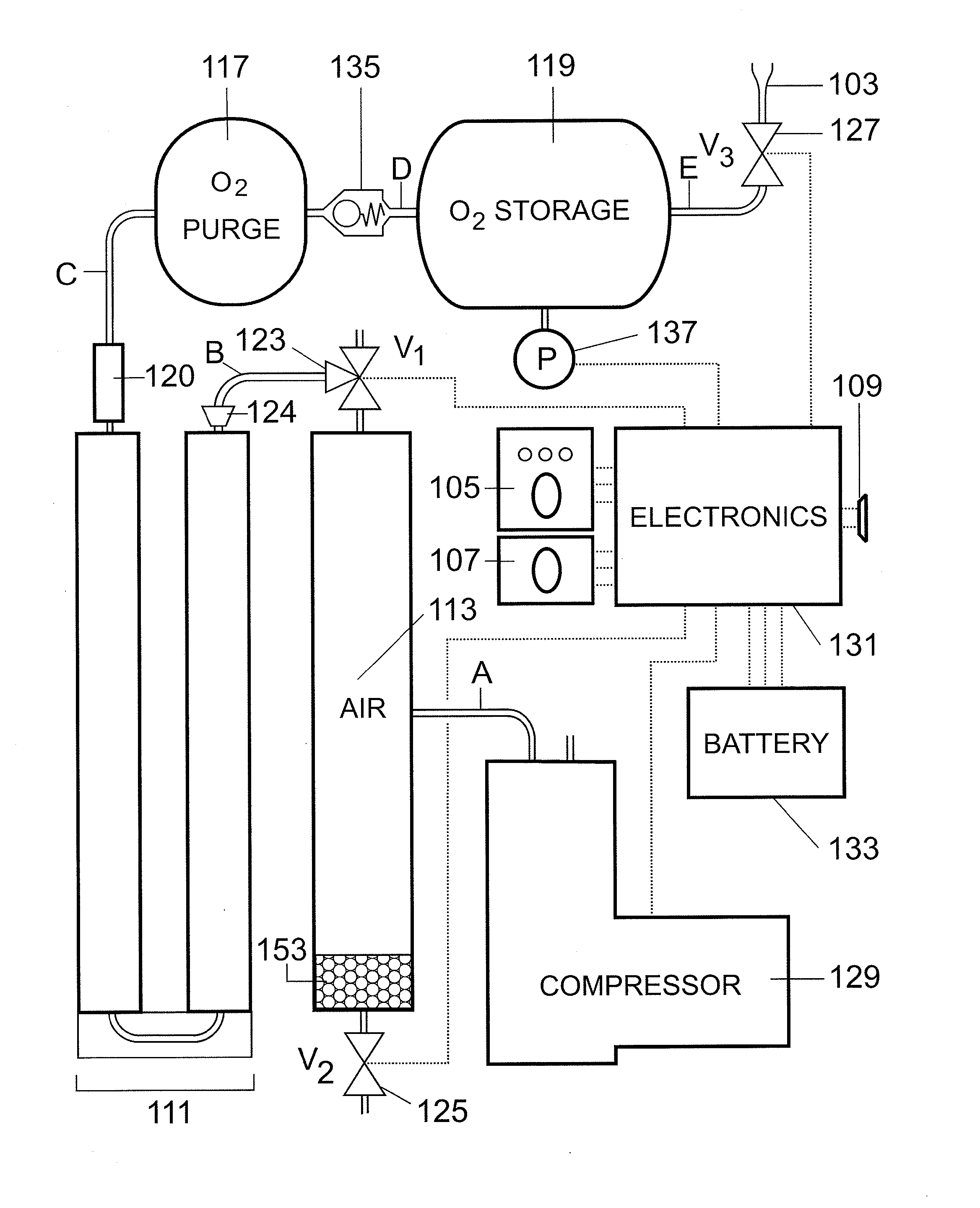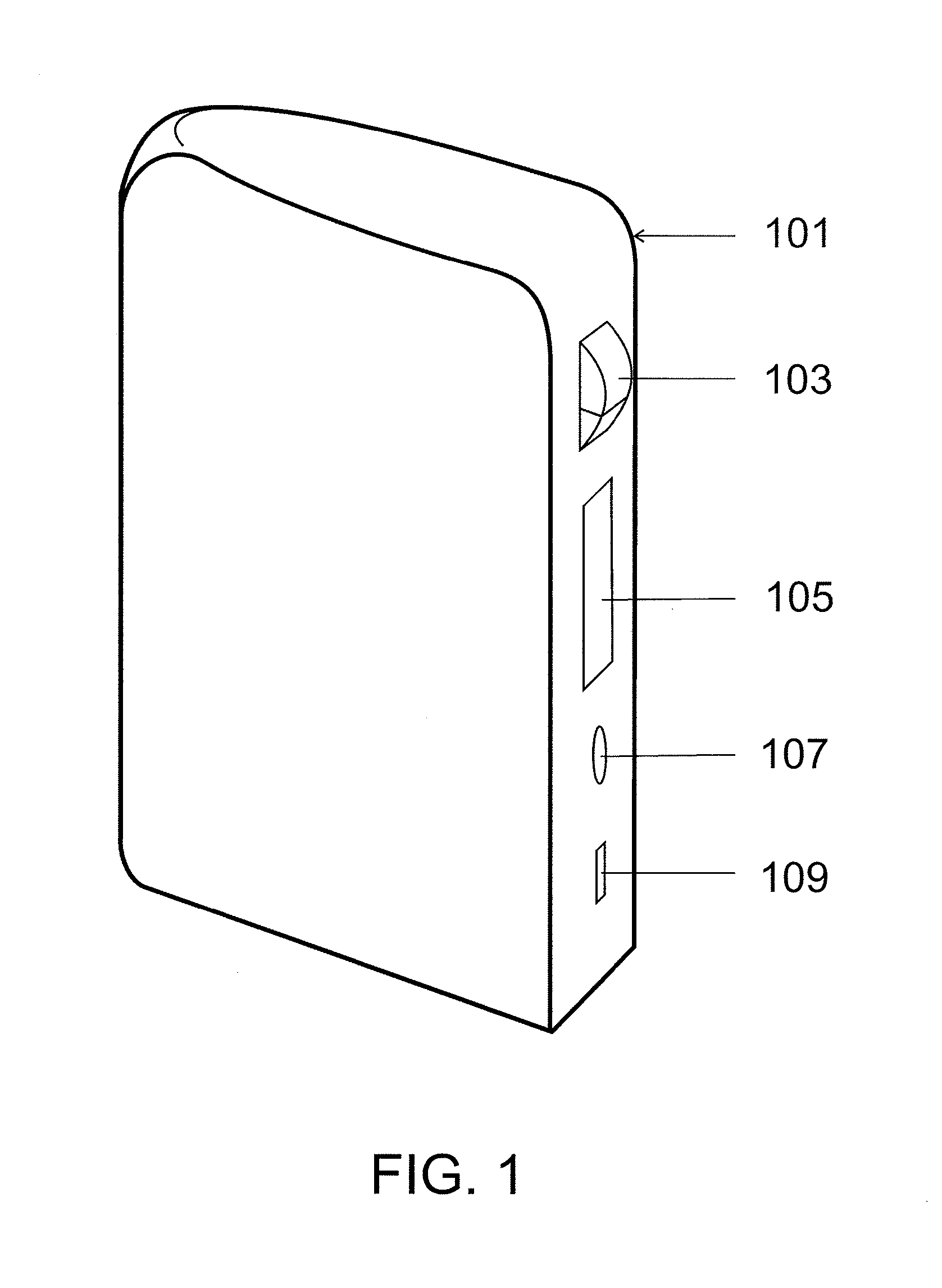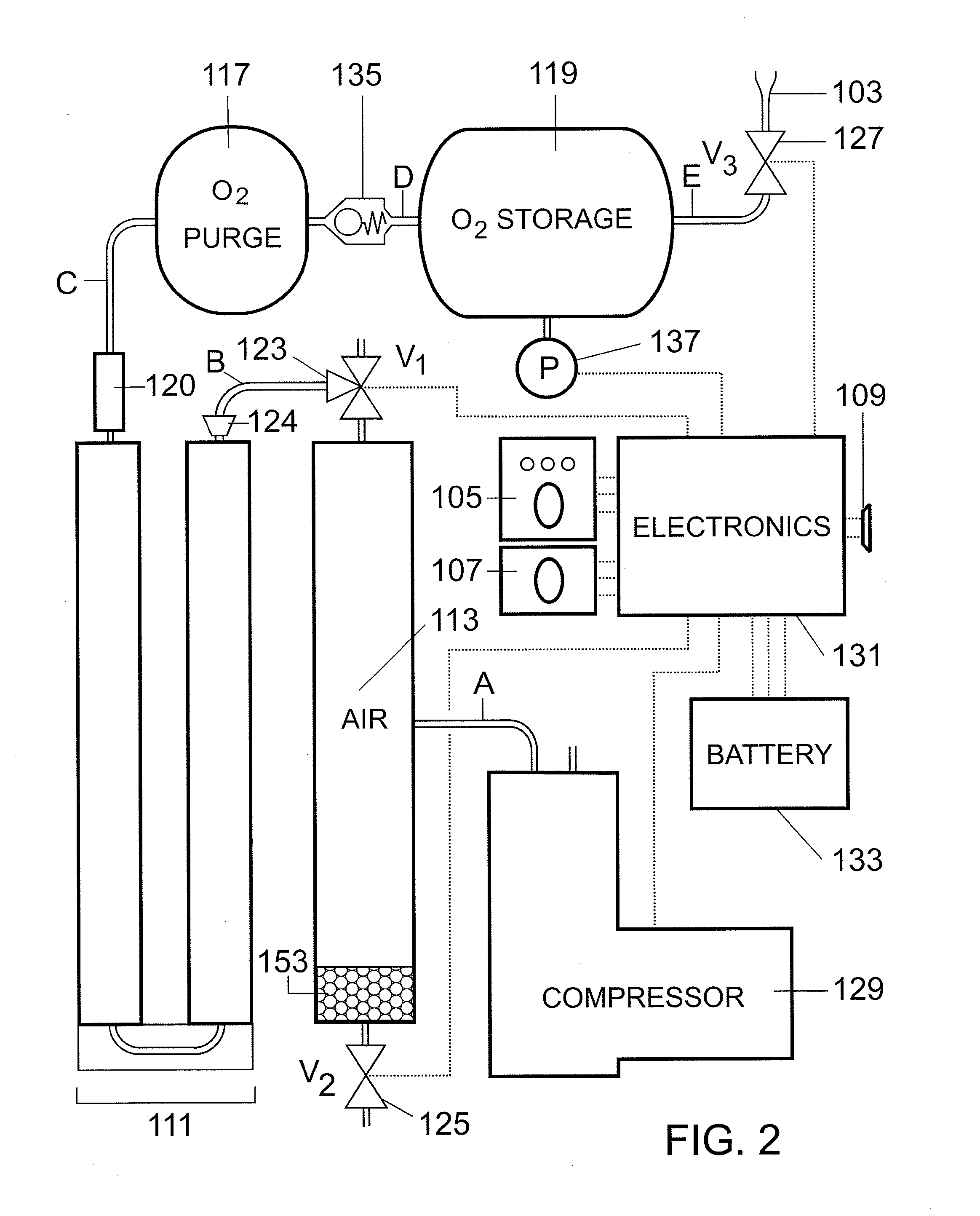Portable oxygen enrichment device and method of use
a technology of oxygen enrichment and oxygen filter, which is applied in the direction of atomized substances, water/sewage treatment by oxidation, and separation processes, etc. it can solve the problems of health and safety problems, significant container and shipping costs, and precautions must be observed, so as to reduce the volume, weight and cost of the device, and ensure the safety of use. , the effect of reducing the volume, weight and cos
- Summary
- Abstract
- Description
- Claims
- Application Information
AI Technical Summary
Benefits of technology
Problems solved by technology
Method used
Image
Examples
example 1
[0314]A portable device is designed that employs a single molecular sieve bed which measures 12 mm in diameter and 80 mm in length, contains approximately 5 grams of 80 to 140 micro meter diameter Lithium exchanged molecular sieve beads, and has pre-loaded piercable ends. A battery operated compressor delivers air to a three way PSA valve at 1.5 liters per minute and 180 kPa pressure. The valve alternately pressurizes and depressurizes the sieve bed at a beginning timing of 0.8 sec adsorb and 0.8 sec desorb. An oxygen enriched product is delivered, through an orifice to a 20 cm3 volume purge vessel, then through a check valve / restrictor to an 80 cm3 volume product storage vessel. As the product storage vessel pressure increases, the adsorb time increases until product storage pressure is 180 kPa and adsorb time is 2.5 seconds. An algorithm generates lookup tables that are stored in a microcontroller and the microcontroller accepts data from a storage vessel pressure transducer to ge...
example 2
[0315]A device is designed that uses 5 grams of adsorbent in a single sieve bed, that cycles at 0.8 seconds desorption and ramps to 1.5 seconds adsorb, and that is either battery or AC mains powered through a transformer. The device uses a 7000 rpm diaphragm compressor which weighs 47 grams, a three way inlet exhaust valve, a purge valve, and a microcontroller to provide timing signals to the valves 20 ml per minute of OEA at plus 85% oxygen content is delivered through a flexible tube to a wound covering. The device components are located in a suitable case and the device weighs less than 200 grams. The device is provided to a patient as part of a wound care kit which also contains several wound coverings and adhesive attachment means as well as flexible tubing to connect the oxygen supply to the wound covering.
example 3
[0316]A device is designed that uses 5 grams of adsorbent in a single sieve bed that is cycled at a timing of 0.8 seconds desorption and 0.8 seconds adsorption. A flow rate of 400 ml per minute at 32% oxygen content is produced and delivered through a flexible tube to a nose piece, head piece, or mask that allows a user to inhale the product gas. The device contains a compressor that operates at 3300 rpm, 150 kPa, and at a flow rate of 2.5 liters per minute air at standard temperature and pressure. The device is powered by a 23 watt hour, 7.4 volt lithium-ion battery that can operate the device for 4.6 hours. The user is provided with a device that weighs less than one pound and delivers sufficient oxygen to assist lung function for persons at high altitudes, in polluted environments, or in exercise situations. The battery and sieve bed are easily replaceable by the user. An optional replaceable air filter may be included. The device may also include a conserver that causes the devi...
PUM
| Property | Measurement | Unit |
|---|---|---|
| particle size | aaaaa | aaaaa |
| aspect ratio | aaaaa | aaaaa |
| total length | aaaaa | aaaaa |
Abstract
Description
Claims
Application Information
 Login to View More
Login to View More - R&D
- Intellectual Property
- Life Sciences
- Materials
- Tech Scout
- Unparalleled Data Quality
- Higher Quality Content
- 60% Fewer Hallucinations
Browse by: Latest US Patents, China's latest patents, Technical Efficacy Thesaurus, Application Domain, Technology Topic, Popular Technical Reports.
© 2025 PatSnap. All rights reserved.Legal|Privacy policy|Modern Slavery Act Transparency Statement|Sitemap|About US| Contact US: help@patsnap.com



